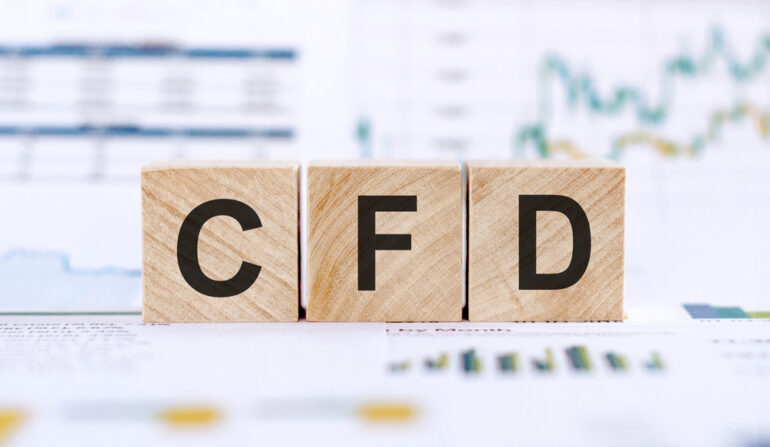In the world of financial trading, Contracts for Difference (CFDs) have gained significant popularity due to their flexibility and potential for profit. However, success in CFD trading requires more than just luck—it demands a deep understanding of market analysis. This article aims to provide traders with a comprehensive guide on how to effectively analyse the market for CFD trading.
Fundamental Analysis for CFD Trading
Fundamental analysis involves evaluating the intrinsic value of an asset by examining external factors such as economic indicators, company financials, and market sentiment. Traders using fundamental analysis seek to identify assets that are undervalued or overvalued based on their underlying fundamentals.
Economic indicators, such as GDP growth, inflation rates, and employment data, provide insights into the overall health of an economy and can impact the prices of assets traded through CFDs. For instance, a strong GDP growth may lead to increased consumer spending and higher corporate profits, which could boost stock prices. Conversely, high inflation rates may erode purchasing power and lead to higher interest rates, which could negatively affect stock prices.
Market sentiment, driven by factors like news events and investor sentiment, can influence market movements and create trading opportunities. Positive news, such as a company’s earnings beat or a favourable regulatory decision, can cause a surge in investor confidence and drive prices higher. Conversely, negative news, such as a product recall or a geopolitical crisis, can trigger panic selling and cause prices to plummet. To get started with investment education, you can learn to invest with ADSS.
Technical Analysis for CFD Trading
Technical analysis involves studying historical price and volume data to identify patterns and trends that can help predict future price movements. Traders using technical analysis rely on various tools and indicators, such as moving averages, support and resistance levels, trend lines, and oscillators like the Relative Strength Index (RSI).
Technical analysts believe that past price movements can provide valuable insights into future price movements. By identifying patterns and trends in price charts, traders can make educated guesses about where prices are likely to go next and adjust their trading strategies accordingly. For example, a trader may use moving averages to identify the direction of the trend and potential entry and exit points. A crossover of short-term moving averages above long-term moving averages may signal a bullish trend reversal, while a crossover below may indicate a bearish trend reversal.
Market Analysis Strategies
Successful CFD traders employ a variety of market analysis strategies, depending on their trading style and risk tolerance. Some traders prefer long-term strategies that focus on identifying undervalued assets with strong fundamentals, while others opt for short-term strategies that capitalise on technical indicators and short-term price fluctuations.
Swing traders aim to profit from short-to-medium-term price movements by identifying trends and reversals in the market. They may use technical indicators such as moving averages and trend lines to identify potential entry and exit points.
Day traders, on the other hand, execute multiple trades within a single day, capitalising on small price movements to generate profits. They may use technical analysis tools such as support and resistance levels and chart patterns to identify short-term trading opportunities.
Regardless of the trading strategy employed, risk management is crucial. Traders should always have a clear understanding of their risk tolerance and implement appropriate risk management measures, such as setting stop-loss orders and position sizing, to protect their capital.
Tools and Resources for Market Analysis
To effectively analyse the market for CFD trading, traders have access to a wide range of tools and resources. Trading platforms and charting software offer advanced technical analysis tools, including customizable charts, indicators, and drawing tools.
Online resources and forums provide valuable insights and information from experienced traders and analysts. Traders can participate in discussions, ask questions, and share ideas with other members of the trading community. Educational materials, such as books, articles, and online courses, can help traders deepen their understanding of market analysis concepts and techniques. Many reputable institutions and trading experts offer courses on topics ranging from basic technical analysis to advanced trading strategies.
Tips for Effective Market Analysis
Successful market analysis requires continuous learning and refinement of skills. Traders should stay updated with the latest news and events that could impact the markets, while also remaining disciplined and controlling their emotions.
Practising market analysis regularly, whether through paper trading or analysing historical data, can help traders hone their skills and develop effective trading strategies. By analysing past trades and identifying strengths and weaknesses, traders can learn from their mistakes and improve their performance over time.
Seeking mentorship or guidance from experienced traders can provide valuable insights and support along the trading journey. Mentors can offer personalised advice, share their experiences, and help traders navigate the complexities of the financial markets.
Conclusion
Analysing the market for CFD trading is a crucial skill that every trader must master to succeed in the financial markets. By understanding the principles of fundamental and technical analysis, employing effective market analysis strategies, and utilising the right tools and resources, traders can make informed trading decisions and increase their chances of success. Remember, continuous learning and adaptation are key to thriving in the dynamic world of CFD trading.







